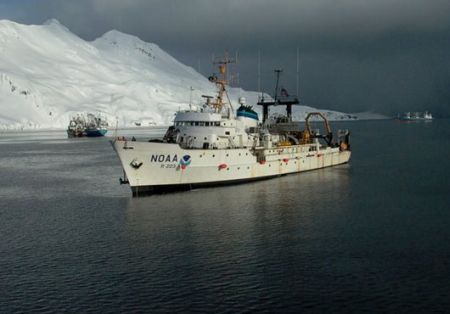
Available on the 4th of July, new chart 11525 (Charleston Harbor Entrance and Approach) replaces the old chart 11523 (Charleston Harbor Entrance). It expands chart coverage further east, covering an additional 345 square nautical miles that wasn’t on the old chart.
“The creation of this chart directly responds to requests made by Charleston pilots, who bring in larger ships with deeper drafts than they did when we made the original harbor chart in 1936,” said Rear Admiral Gerd Glang, director of NOAA’s Office of Coast Survey.
In addition to consulting with the pilots in creating the new chart, Coast Survey cartographers also worked with the U.S. Army Corps of Engineers, which is reviewing a proposed deepening project at Charleston to handle the bigger ships that are expected with the expansion of the Panama Canal.
Since the first edition of the current chart was published in 1936, multiple deepening projects have displaced the sea buoy and channel entrance over nine nautical miles to the east — areas the chart did not cover. The new and updated chart will now include the area where pilots board the deep draft vessels as they prepare to guide them into the harbor.
NOAA has also issued a new nautical chart for the Delong Mountain Terminal, a shallow draft port servicing the Red Dog Mine, one of the world’s largest producers of zinc concentrate, on the western coast of Alaska in the Arctic.
New chart 16145 fills in historically sparse depth measurements, using new survey data recently acquired specifically for this chart.
“This chart is important to the Arctic economy, providing navigational intelligence for the vessels shipping zinc and lead concentrate from Red Dog Mine and offers vastly more navigational information than the only other available chart of the area,” said Rear Admiral Gerd Glang, director of NOAA’s Office of Coast Survey. “The shipping season from the terminal only lasts about 100 days, so maritime efficiency is vital, and this chart will improve shipping safety during that time.”
Red Dog Mine is about 50 miles inland. The terminal uses self-loading barges to ferry the ore concentrates to the deep draft ships anchored several miles offshore.
Previously, the only official nautical chart available to transit the nearshore area was the 1:700,000 scale chart 16005, which shows one depth measurement within three nautical miles of the approach to Delong Mountain Terminal.
New NOAA chart 16145 offers a much more usable 1:40,000 scale coverage, with updated shoreline measurements and newly acquired NOAA hydrographic information. It shows dozens of depth measurements, representative of thousands of soundings, to give the mariner accurate depths for navigation.
This is NOAA’s third new Arctic chart issued in the past three years. Chart 16161 (ENC US5AK97) for Alaska’s Kotzebue Harbor were issued in 2012, and chart 16190 (ENCs US4AK8D and US5AK8D) for Bering Strait North were issued in 2013.
We use cookies to improve your experience. By continuing to use our site, you accept our Cookies, Privacy Policy,Terms and Conditions. Close X